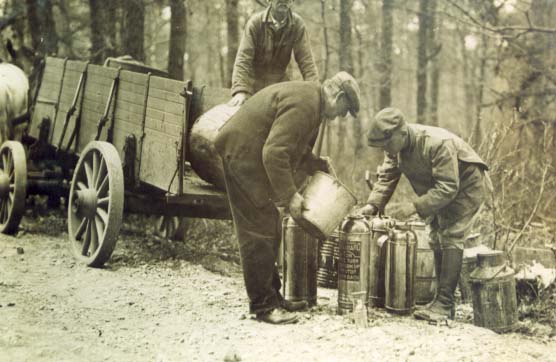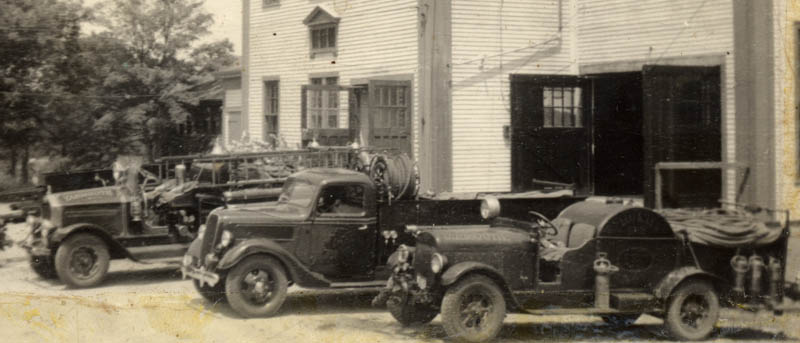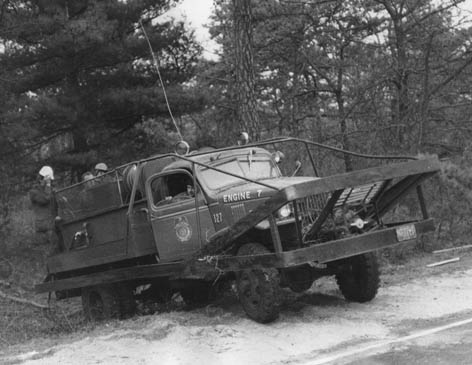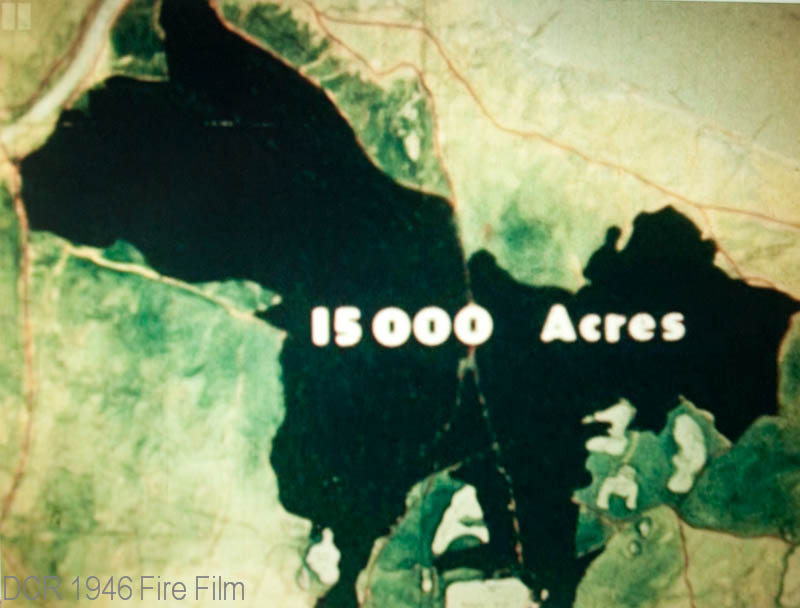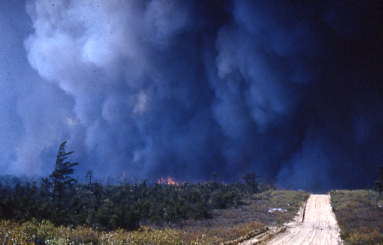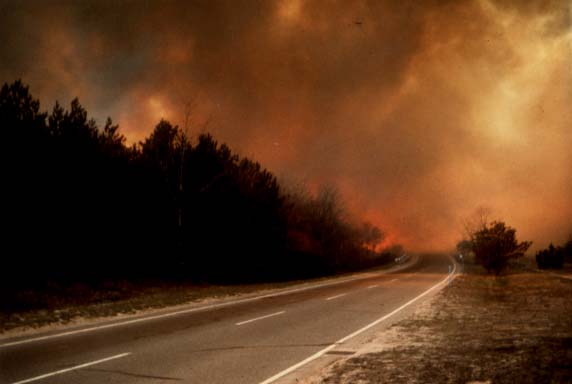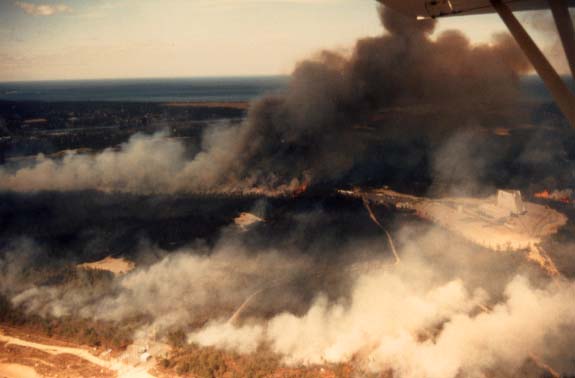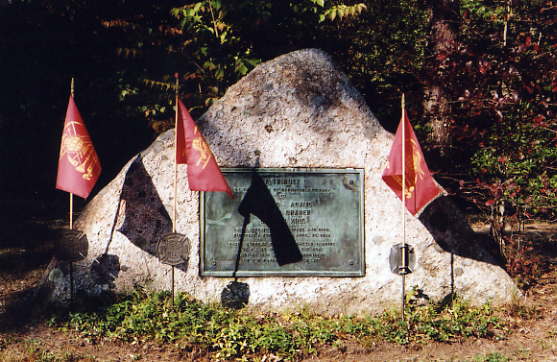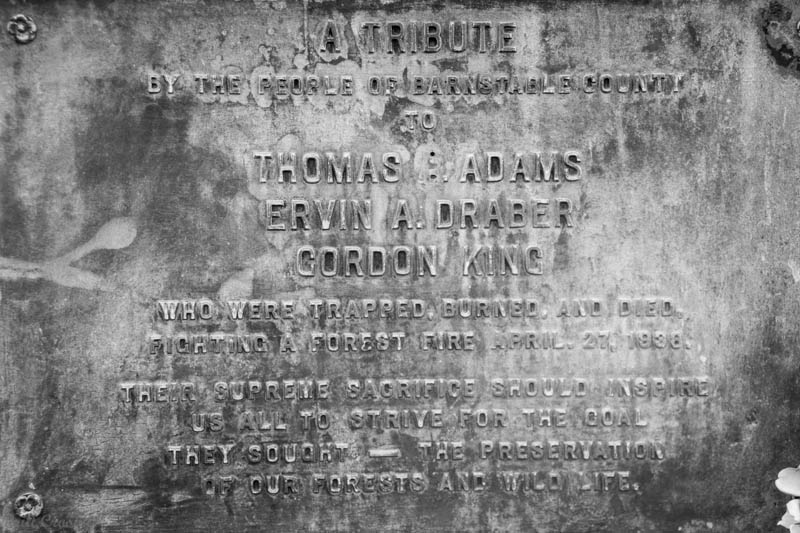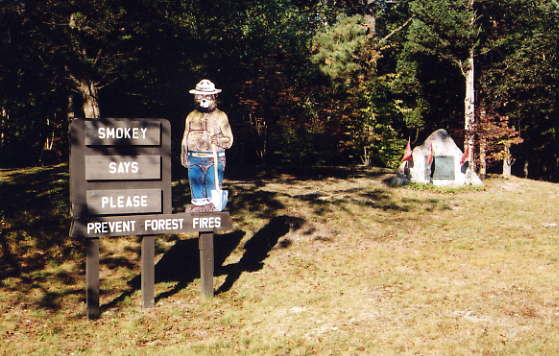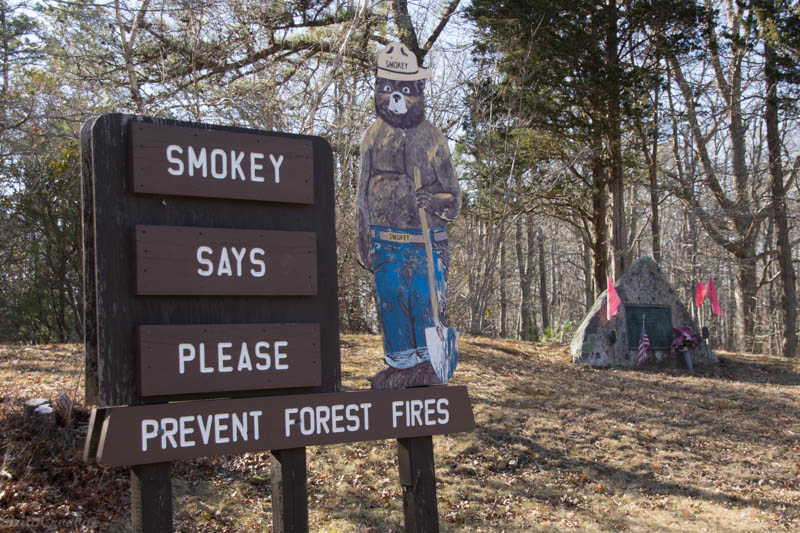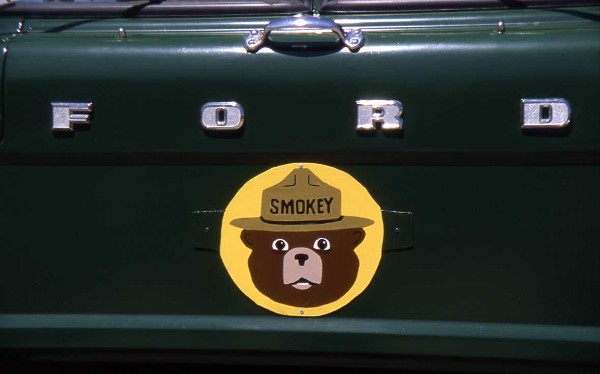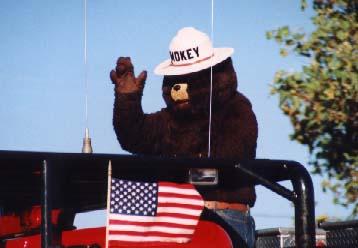The story of the Cape Cod Brush
Breakers begins with an understanding of the land and its unique
forest fire history.
Cape Cod, also known as Barnstable County, is a
bent arm shaped peninsula protruding approximately 70 miles into the
ocean off the southeastern coast of Massachusetts. The land was
created thousands of years ago by the retreat of glacial ice, which
deposited clay, rocks, boulders, and a mostly sandy soil. Huge
chunks of ice that melted formed many of the ponds, lakes, and
rivers found across the area. The coastline is pocketed with many
salt water harbors and bays, and numerous marshlands and wetland
bogs. Inland areas, some with considerable hills, were covered by
vast acres of evergreen pitch pine tree forests.
Just "off Cape" on the mainland side are similar
lands within what is known as Plymouth and Bristol counties. To the
south of the Cape are the islands of Martha's Vineyard and Nantucket
that also share similar natural conditions as the Cape.
Strong, warm, southwesterly winds in the spring
and into the fall tended to dry the forests making them as explosive
as tinder when a fire started. The wind driven forest fires would
frequently burn thousands of acres of forest unchecked year after
year.
Native "Indians" who lived in the area would
cultivate their land and protect their settlements by "firing the
woods" seasonally to reduce the undergrowth and thereby effectively
manage to keep the larger fires from their lands.
After the arrival of the Pilgrims in 1620 and
with the eventual inhabitation of the lands by more and more people,
areas of forests were cut down to create farm lands and to build
homes. Harvested wood heated homes and even enabled industry to
flourish in the area.
Inhabitants throughout history frequently faced
many wild fires that threatened their lands, homes, and businesses.
Fires that grew to thousands of acres would burn for days, creating
billowing clouds of heavy, dark, choking smoke that filled the sky.
Wind driven fires were nearly impossible to stop and frequently
burned until weather changed or the fire reached a natural break
such as water.
In the late 1800s and early 1900s, fire towers
were erected on high grounds so that spotters could observe and
report incipient fires. During the 1920s fire patrol trucks worked
in conjunction with fire towers to spot and attempt to quickly
extinguish wildland fires even before some fire departments were
organized.
As motorize vehicles became more powerful and
available in the 1930s, 1940s, and beyond, a variety of fire
apparatus designed specifically to address the dangerous forest
fires were built.
Forestry studies in the early 1920s found that
the explosive nature of forest fires in southeastern Massachusetts
rivaled conditions in California and other areas where fires rapidly
outrun efforts to contain them.
Many major fires over the years have claimed
thousands of acres of wildland, numerous structures, and have
claimed a number of lives.
Brush Breakers are not utilized in other parts of
the country the way they are here. Topography of the land and other
factors make them useful here and over the decades they have been
used to contain and control many fires which otherwise would have
grown much larger and caused much more of a threat to lives and
property.
During the larger forest fires, brush breakers
working in groups work to surround and contain the fires so they can
be extinguished using water carried by the brush breakers. Tankers,
or tenders as they may be called, position on dirt roads or other
safe spots to resupply the brush breakers as they make trip after
trip back into the fire until it is controlled.
Over the years, fire tower spotters would observe
smoke as fires began. Two or more towers would utilize compass lines
and maps to cross up a general area of where the fire is located
(way before GPS was even imagined). This information was then
relayed via phone or radio to crews that would respond to the fire.
A system of mutual aid was developed to manage the large fires that
could quickly exceed the ability of one or two trucks to handle.
Radio communications and basic incident command systems were
utilized, again long before the formalized incident command systems
and communications systems we consider standard today. |


